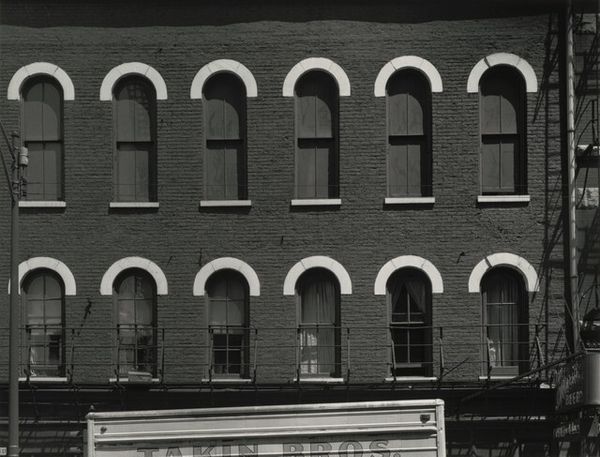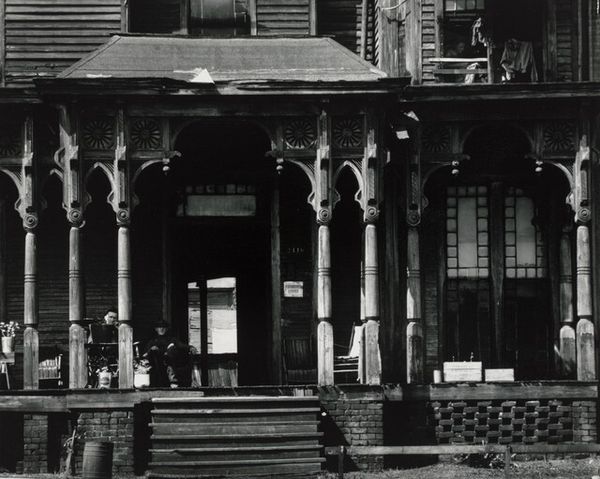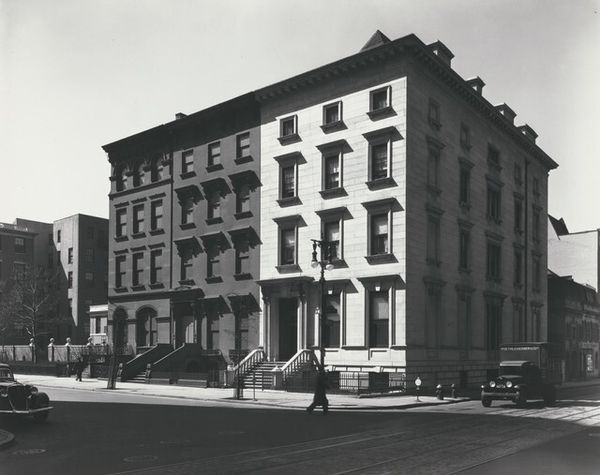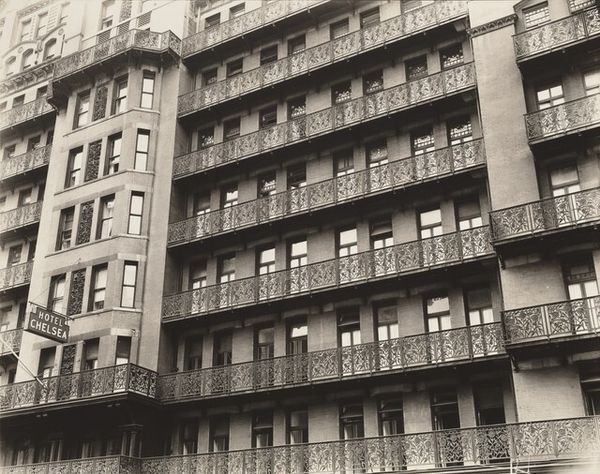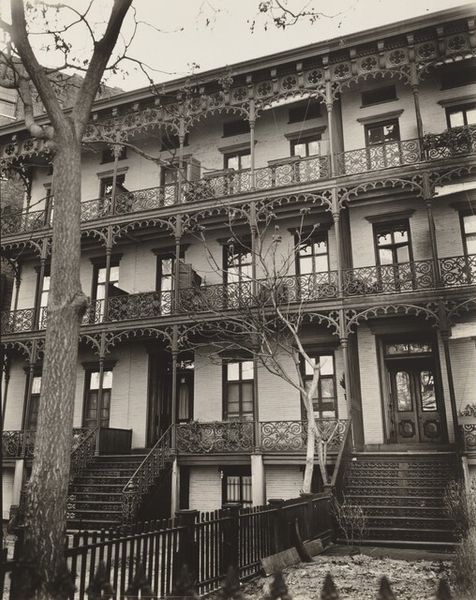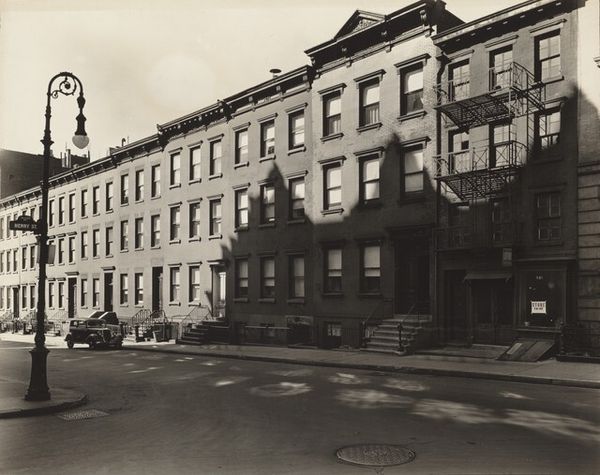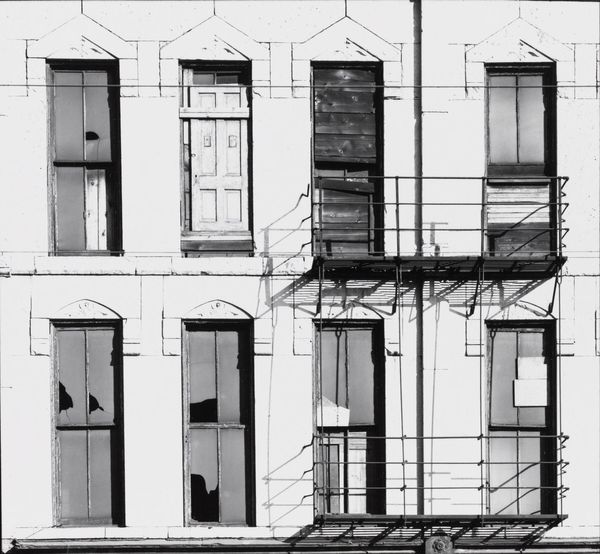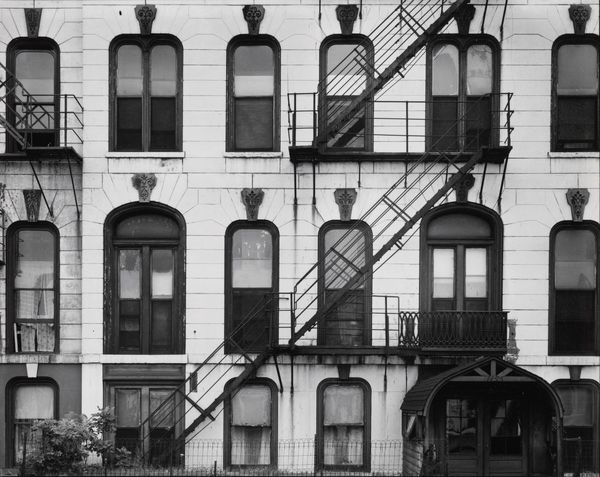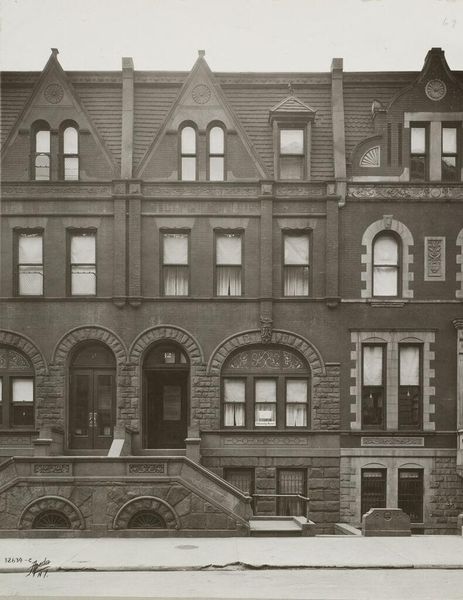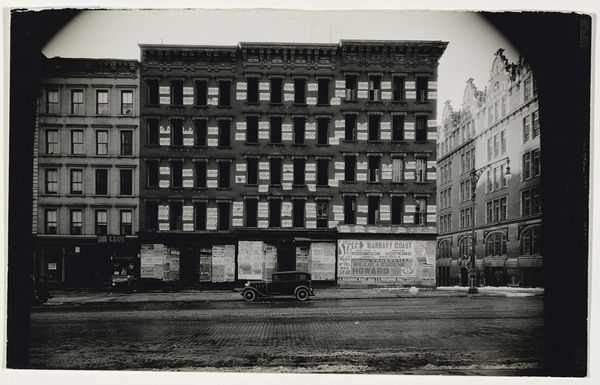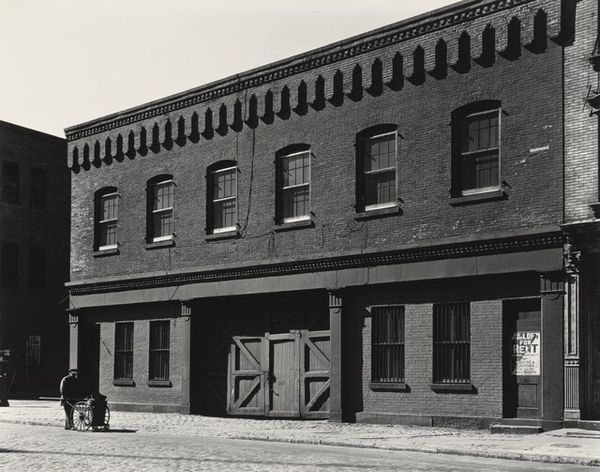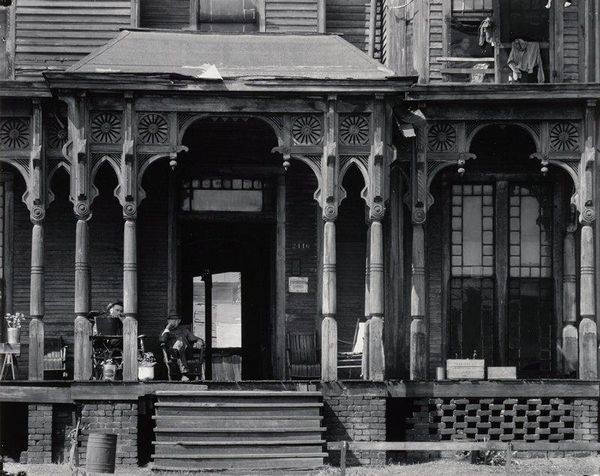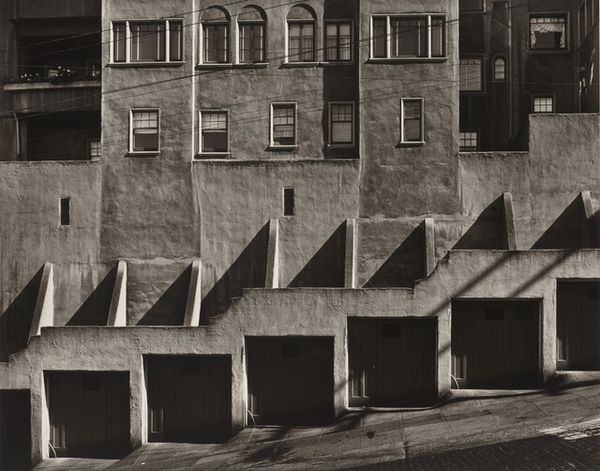
photography, architecture
#
historic architecture
#
photography
#
ashcan-school
#
cityscape
#
building photography
#
architecture
#
realism
Dimensions: image/sheet: 20.32 × 25.4 cm (8 × 10 in.)
Copyright: National Gallery of Art: CC0 1.0
Curator: Immediately, I am struck by the rigidity, the ordered severity. The tight monochrome tonality accentuates the geometry. Editor: You know, that’s a really astute observation about this stark architectural study. This is a photograph by Harry Callahan, titled "Dearborn Street, Chicago," taken sometime after 1948. For me, it reflects an urban experience marked by social divisions, particularly after the war when urban decay intensified due to inequitable housing policies. Curator: Absolutely. Visually, Callahan employs a limited tonal range, and that accentuates the structural integrity of the building’s facade, with its sequence of windows and austere geometry. Editor: The way Callahan positions the architecture feels like an examination of social barriers and the challenges of upward mobility within marginalized communities during this period. Consider how closed-off the building looks. How might ideas about home and shelter function when looking at those tightly drawn curtains or blank windows? Curator: While I recognize the important sociocultural aspects, for me, this composition also creates visual rhythms. The verticals and horizontals establish the plane. Editor: True, the geometry cannot be dismissed, it holds tension, especially knowing Callahan used a straightforward photographic style. His approach also allows him to engage with reality, framing its complexities but doing so while perhaps subtly referencing or confronting political injustices. Curator: His emphasis is on revealing structure through stark tonal values; that structure dictates a clear urban image—its essence extracted, defined and delivered via stark photography. Editor: Callahan provides a compelling exploration into urban society, prompting reflection on what visibility—or its absence—can reveal about communities. His work serves as a mirror, inviting critical thought on civic policy and its impact. Curator: Reflecting on that rigidity versus expressiveness of tone really frames the essence of Callahan’s work. Editor: This particular photograph makes me think about how we need to re-evaluate assumptions related to mid-century photographic traditions and examine those contributions from a socially informed position.
Comments
No comments
Be the first to comment and join the conversation on the ultimate creative platform.
